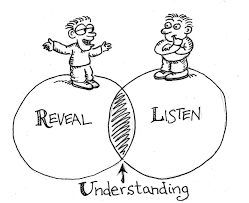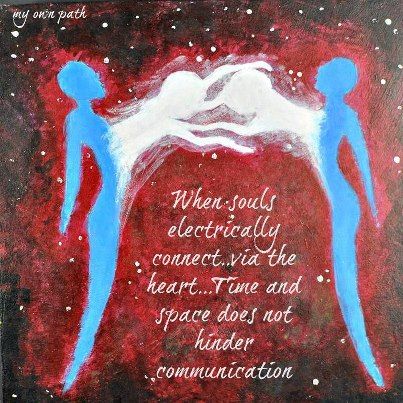The second reading from the book of Numbers and the thirty-fifth reading from the Torah is called Nasso(נשא), a word that literally means “lift up.” It comes from the first word of the second verse in Hebrew, which could literally be translated to say, “Lift up the heads of the sons of Gershon,” an idiomatic way of saying, “Make an accounting of the sons of Gershon.” This Torah portion finishes up the census of the Levites that was under way at the end of the last Torah portion, before going on to discuss the purification of the camp, the ritual for a woman suspected of adultery, the laws of the Nazirite vow, the priestly benediction and the gifts the heads of the twelve tribes brought for the dedication of the altar.
All posts by Michael
THE Problem??
Let’s start here.
Words are limiting.
Stay Open mentally.
Establish a “state of inquiry.” Suspend Belief. Understand the meaning of ” “the willing suspension of disbelief.”
Doubt Everything.
We KNOW the destination. Our yoga map clearly states it. It is Unity, Oneness, a connection to “Source.” In fact, most metaphysical, religious and spiritual “maps” agree. Yoga calls this destination Samadhi. Other words from other maps are “Heaven, Nirvana, The Endless, Brahman ……
And furthermore, this destination is also the “Origination.” We came from Oneness and somehow are “born” into this world of Duality.
Is Duality The Problem?
We want something we don’t have and the space in-between represents the unfulfilled, the lack, the separation, the distance……
Buckminster Fuller, in his “Re-thinking The Lord’s Prayer” writes…….”Total Accountability and Total Feedback constitute the minimum and only perpetual motion system.”

There is a living relationship between the poles on each end of the continuum of duality. Nature always “seeks” balance of some sort. The Fibonacci sequence, for example, is an expression and map of this process. There is movement and a give and take in the precession, interaction and transformation.
I found this gem of a discourse between two great minds. It’s the end (last 15 minutes) of an hour+ discussion. There is a link in the description section (if you go to the YouTube channel) to the full discussion.
WARNING. This takes focus. One of these guys is a professor who drives me crazy sometimes because he takes too long to make his point. The other dude is cool. Don’t drive or use heavy machinery while listening. Try not to multi task while listening.
As you watch, can you “see” the problem? Can you see why studying the process of expanding consciousness could be valuable to finding solutions? Can you see why we practice yoga and meditation and study multiple “maps of the territory.?”
“The paradox of the paradox is that the paradox is a paradox.” Krishnamurti.
“All paradoxes can be reconciled.” The Kybalion
Bamidbar
The Hebrew name of the fourth book of the Torah (also the name of the first reading) is Bamidbar (במדבר), which means “In the wilderness.” It comes from the first words of the first verse, which say, “Then the LORD spoke to Moses in the wilderness of Sinai” (Numbers 1:1). The English title of the book is “Numbers.” The book of Numbers tells the story of Israel’s trek through the wilderness on their way to the Promised Land, their failure at the edge of the land and the subsequent forty years of wandering. It concludes with the story of the triumphs over the first Canaanite resistance. The book ends with the Israelites poised on the edge of Canaan, ready to take their inheritance.
The first reading from Bamidbar and the thirty-fourth reading from the Torah begin with a census of the tribes of Israel and the Levitical families just prior to the departure from Sinai.
Behar-Bechuktai
Today is the first day of the 6th week of The Counting of The Omer: Chesed of Yesod:
Love is the heart of bonding. You cannot bond without love. Love establishes a reliable base which allows bonding to build on. If you have a problem bonding, examine how much you love the one (or the object) you wish to bond with. Do I try to bond without first fostering a loving attitude? Is my bonding expressed in a loving manner?

Love is the heart of bonding. You cannot bond without love. Love establishes a reliable base which allows bonding to build on. If you have a problem bonding, examine how much you love the one (or the object) you wish to bond with. Do I try to bond without first fostering a loving attitude? Is my bonding expressed in a loving manner?
Moses is up on the mountain prepping for the Revelation of The Torah.
Here we go………
Behar
The thirty-second reading from the Torah and second-to-last reading from the book of Leviticus is called Behar (בהר), which means “On the Mountain.” The name comes from the first words of the first verse of the reading, which could be literally translated to read, “The LORD then spoke to Moses on Mount Sinai” (Leviticus 25:1). This portion from the Torah introduces the laws of the sabbatical years, the jubilee and laws concerning redemption. In most years, synagogues read Behar together with the following portion, Bechukotai.
Bechukotai
The last reading from the book of Leviticus is called Bechukotai (בחקותי), which means “In My Statutes.” The name comes from the first verse of the reading, which begins with the words “If you walk in My statutes …” (Leviticus 26:3). This last reading from Leviticus promises blessings and rewards for Israel if they will keep the Torah, but punishment and curses if they break the commandments of the Torah. The last chapter discusses laws pertaining to vows, valuations and tithes. In most years, synagogues read Bechukotai together with the preceding portion, Behar.
Emor
The thirty-first reading from the Torah is called Emor (אמור), a title that comes from the first verse of the reading, which says, “Then the LORD said to Moses, ‘Speak (emor) to the priests, the sons of Aaron …'” (Leviticus 21:1). Emor begins with special laws of sanctity, propriety and purity for the priesthood. Leviticus 23 provides an overview of the biblical calendar, a listing of the LORD’s appointed times.
We are in the 5th week of The Counting of The Omer. HOD. Humility as the vessel of endurance and victory. Interesting times. Seems to be all about a process of purification.
You may find value in this ten minute video. He has a calming presence about him.